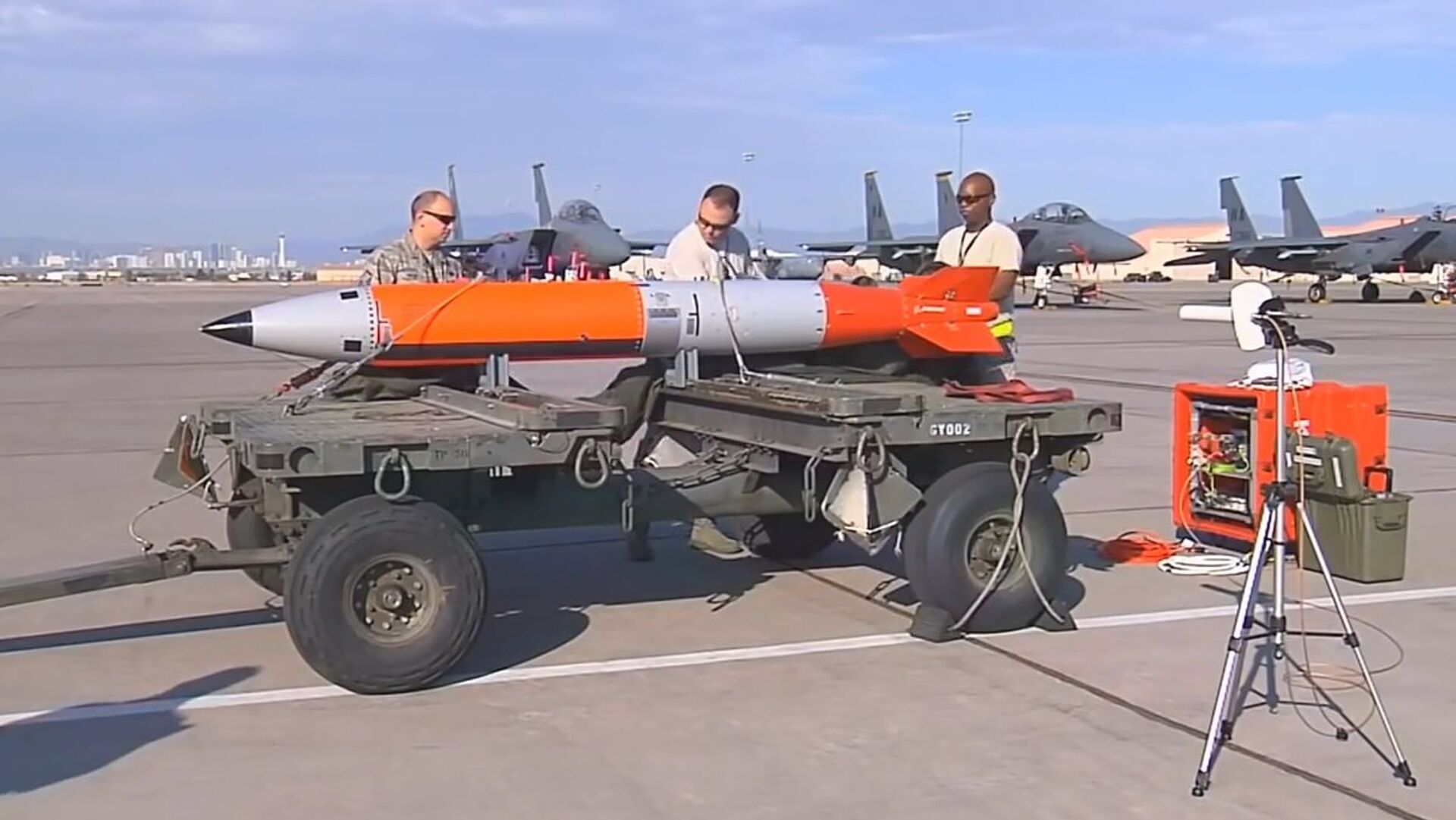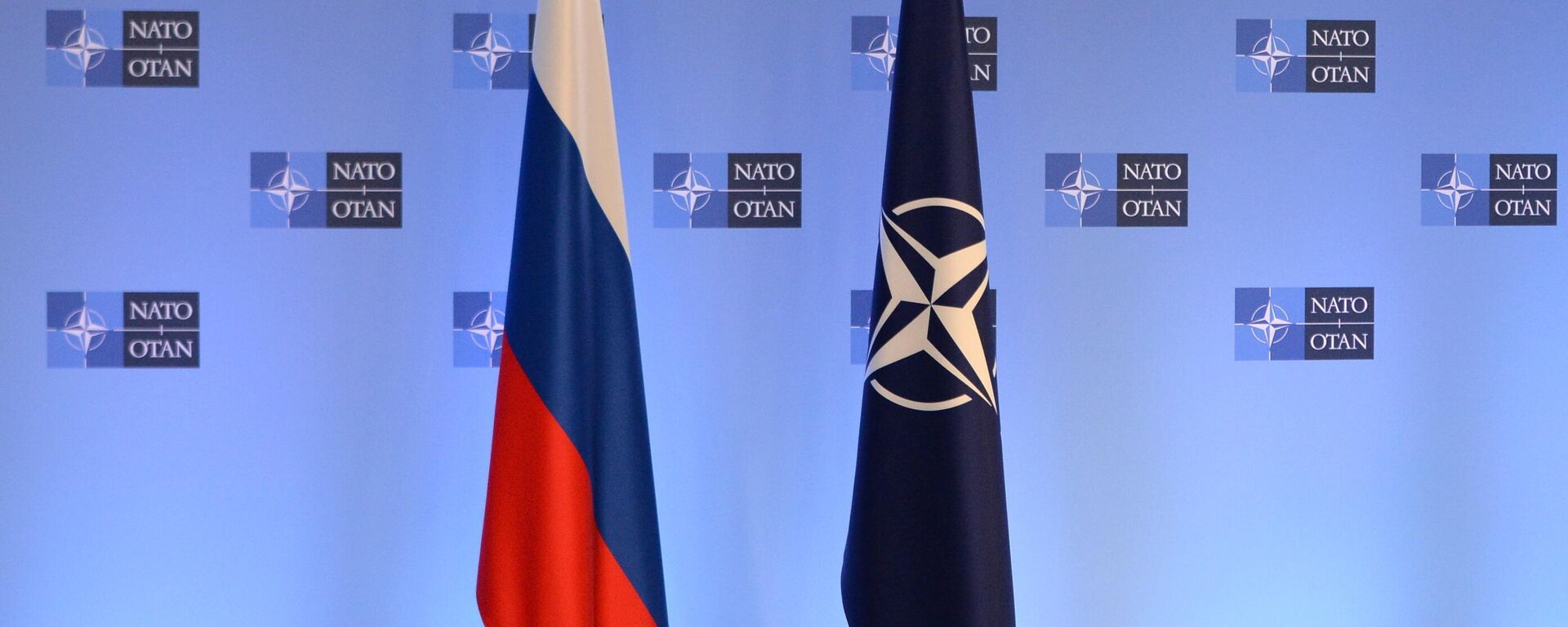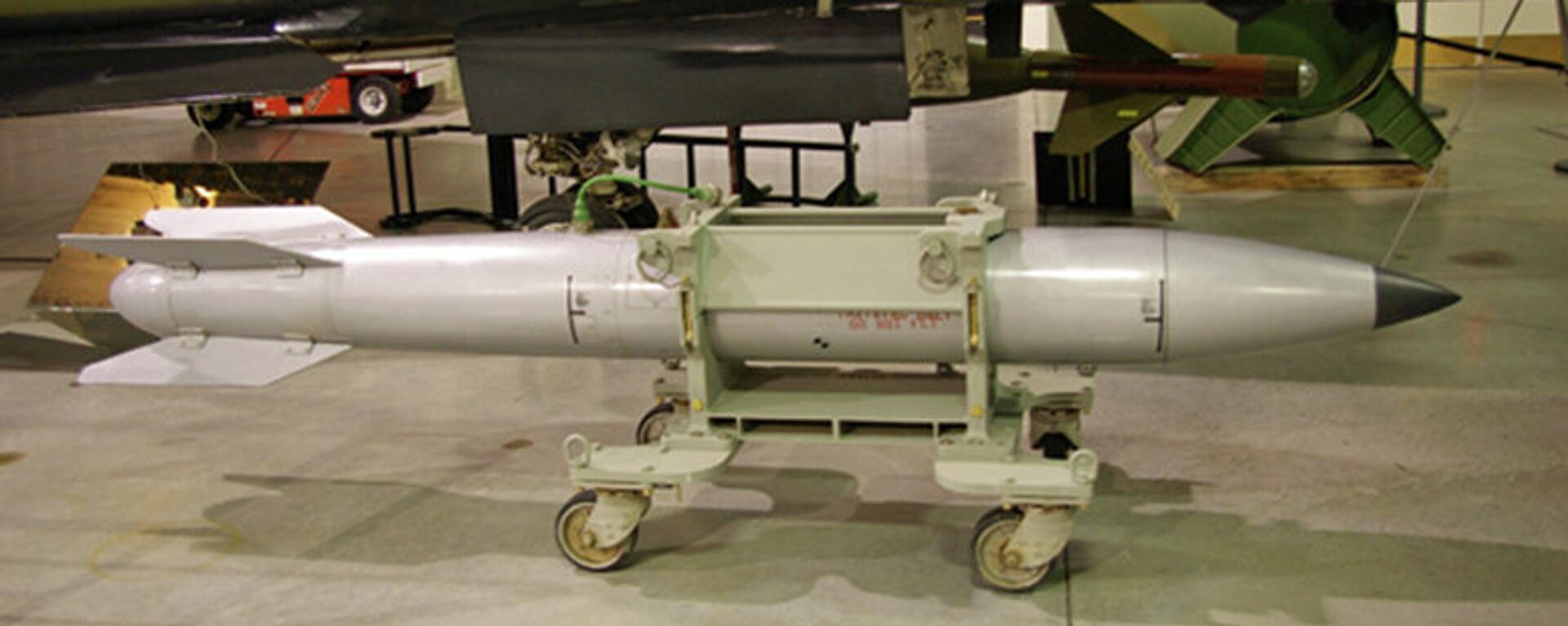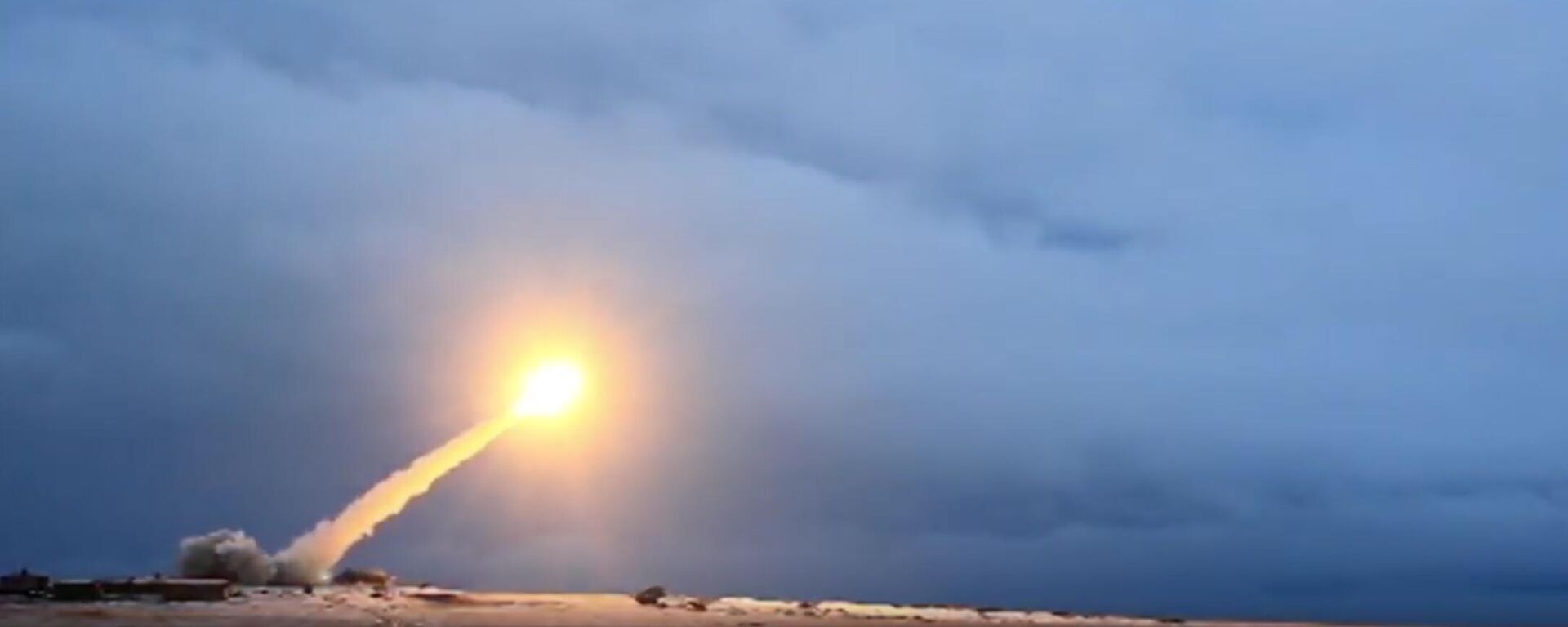‘Steadfast Noon’ Risking Noon Twilight: What are Dangers of NATO’s ‘Nuclear Sharing’ Drills?
Nuclear Bomb B61 Mod 12 seen on an airfield. File photo. Screenshot of YouTube video.
NATO kicked off its annual Steadfast Noon nuclear exercises this week. What’s important to know about them? What military assets could they involve? What are the dangers associated with them? Sputnik explores.NATO’s Steadfast Noon nuclear drills began on Monday and will run over the next two weeks, involving some 2,000 personnel from eight bases and over 60 aircraft from 13 bloc countries. The bulk of the drilling is expected to take place over the North Sea (about 900 km from the Russian border), as well as Belgium, Denmark, the Netherlands and the UK.Central to the exercises is drilling the concept of ‘nuclear sharing’ – which allows designated NATO allies’ jets to simulate combat missions using US nukes stored on their territory.NATO’s nuclear sharing concept goes back to the Cold War, when the US deployed thousands of surface-to-surface, surface-to-air, air-tor-air and air-to-surface weapons with nuclear payloads to allied countries, including Canada, the UK, Greece, Turkiye, Italy, and West Germany. Guarded by US Air Force or Army personnel, the arms remained (and still remain) under the control of the US military, which has the codes needed to arm them.By 1991, the USSR removed all its nuclear weapons from Eastern Europe, and urged the US to do the same. Washington never did, and today, keeps 100-150 B61 nukes in Europe and Turkiye, including:10-15 bombs at Belgium’s Kleine Brogel Air Base – deliverable by F-16 MLU and F-35A jets.10-15 B61s at Germany’s Buchel Air Base – carried by PA-200 Tornado jets and eventually, F-35As.Up to 45 B61s at Italy’s Aviano and Ghedi air bases, deliverable by F-16 C/Ds, Tornados, and F-35As.About 20 bombs at the Netherlands’ Volkel Air Base, delivered by F-16 MLUs and F-35As.Up to 50 B61s at Turkiye’s Incirlik Air Base, deployed by unspecified US military aircraft.Poland has expressed readiness to host US nukes under the Nuclear Sharing program. It’s likely the bombs would be deployed at Lask Air Base, central Poland, where the US Air Force has a forward presence, and has already participated in nuclear drilling. WorldIntelligence Data-Sharing With Ukraine Fuels Risks of Direct Russia-NATO Clash – Moscow9 October, 11:31 GMT
WorldIntelligence Data-Sharing With Ukraine Fuels Risks of Direct Russia-NATO Clash – Moscow9 October, 11:31 GMT
The B61 has been in production since the 1960s, with over 3,000 bombs of 13 different variants created. Today, the arsenal consists mostly of B61 Mod 3 and Mod 4 gravity bombs, according to the Center for Arms Control and Non-Proliferation. Produced since 1979, these weapons have a yield between 0.3-170 kt (Mod 3) and 0.3-45 kt (Mod 4). A Mod 7 variant also exists, with a yield between 10-340 kt.
Work is underway to replace all three with the Mod 12, which has a 0.3-50 kt yield. Production began in 2021, and 400-500 bombs are expected, according to the Bulletin of the Atomic Scientists.
What are the Risks Associated With Nuclear Sharing?
While B61s are tactical weapons, that doesn’t make them less dangerous than their strategic cousins, in light of the US nuclear doctrine’s allowance for nuke use in a first strike, even against “non-nuclear weapons states,” in certain circumstances. The bombs that devastated Hiroshima and Nagasaki in 1945 had yields of 15 and 21 kt, respectively. The deployment of US nuclear weapons abroad frees the Pentagon’s hands for nuclear aggression involving tactical weaponry far beyond America’s home shores. WorldRussia May See Ukrainian Long-Range Attacks as ‘Precursor to Nuclear Strike’, Ex-DoD Analyst Fears31 May, 18:43 GMTNuclear Sharing program nukes are stored in so-called ‘Weapons Storage and Security System’ (WS3) facilities, situated in underground vaults. While info about the facilities, and even basic details on the nukes’ placement is ordinarily kept in strict secrecy, details about risks associated with hosting the weapons do occasionally leak out.In 2023, the Federation of American Scientists published a photo of a damaged B61 at Volkel Air Base, showing the misshapen nuke on a trolley with one of its stabilizer fins missing. Neither US nor Dutch authorities informed the public of any incidents involving nukes at the base.FAS researcher Hans M. Kristensen speculated at the time that the weapon was hit with “significant force,” possibly by a vehicle in transit, or “bent out of shape by the weapons elevator of the underground storage vault.” In any event, the incident constituted “the first publicly known case of a recent nuclear weapons accident at an airbase in Europe,” the observer noted.FAS stressed that while the risks of an accidental detonation was extremely minute, such an eventuality would have risked widespread nuclear contamination.
WorldRussia May See Ukrainian Long-Range Attacks as ‘Precursor to Nuclear Strike’, Ex-DoD Analyst Fears31 May, 18:43 GMTNuclear Sharing program nukes are stored in so-called ‘Weapons Storage and Security System’ (WS3) facilities, situated in underground vaults. While info about the facilities, and even basic details on the nukes’ placement is ordinarily kept in strict secrecy, details about risks associated with hosting the weapons do occasionally leak out.In 2023, the Federation of American Scientists published a photo of a damaged B61 at Volkel Air Base, showing the misshapen nuke on a trolley with one of its stabilizer fins missing. Neither US nor Dutch authorities informed the public of any incidents involving nukes at the base.FAS researcher Hans M. Kristensen speculated at the time that the weapon was hit with “significant force,” possibly by a vehicle in transit, or “bent out of shape by the weapons elevator of the underground storage vault.” In any event, the incident constituted “the first publicly known case of a recent nuclear weapons accident at an airbase in Europe,” the observer noted.FAS stressed that while the risks of an accidental detonation was extremely minute, such an eventuality would have risked widespread nuclear contamination. MilitaryUS Scientist Sounds Alarm About Incident Involving American Nuke at Dutch Air Base3 April 2023, 17:13 GMTNuclear Sharing is also risk for another reason: heightened nuclear danger.In the 1980s, when the US placed nuclear-armed Pershing and cruise missiles in Western Europe, it sparked the largest mass protests in modern European history, with three million people in Western Europe, and two million elsewhere, protesting the weapons, and for good reason: the deployment forced the USSR to put its nuclear forces on hair trigger alert, nearly sparking an all-out nuclear war in 1983.
MilitaryUS Scientist Sounds Alarm About Incident Involving American Nuke at Dutch Air Base3 April 2023, 17:13 GMTNuclear Sharing is also risk for another reason: heightened nuclear danger.In the 1980s, when the US placed nuclear-armed Pershing and cruise missiles in Western Europe, it sparked the largest mass protests in modern European history, with three million people in Western Europe, and two million elsewhere, protesting the weapons, and for good reason: the deployment forced the USSR to put its nuclear forces on hair trigger alert, nearly sparking an all-out nuclear war in 1983. MilitaryHow US is Flirting With Idea of ‘Limited’ Nuclear Conflict With Russia and China29 May, 11:17 GMT
MilitaryHow US is Flirting With Idea of ‘Limited’ Nuclear Conflict With Russia and China29 May, 11:17 GMT

